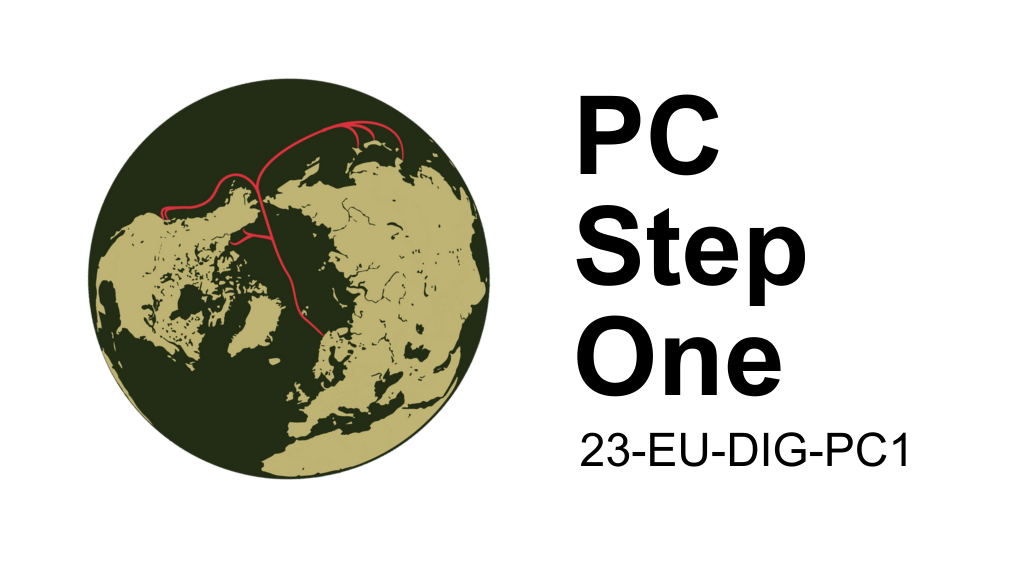EU funding opens opportunities for digital infrastructure and research in the Arctic

The next sub-project in Polar Connect is now being launched, where five Nordic actors are coming together to secure the global digital infrastructure of the future.
Polar Connect is an initiative that establishes a sustainable and reliable data connection between Europe and Asia along a new route via the Arctic Ocean. Now, the European Commission is granting 40 MSEK in funding for Polar Connect's next sub-project, which goes by the name Polar Connect Step 1 (23-EU-DIG-PC1), which means that the project can be launched.
The Swedish Polar Research Secretariat has been awarded the EU funds together with the Swedish Research Council (via Sunet), NORDUnet, the Technical University of Denmark and GlobalConnect.
– Through the EU funding, we can collaborate with more possible actors in fiber optic data communication, sensor development, Arctic research and logistical support. I think it will be easy to find partners as the project has attracted great interest within the EU and also in Japan and Korea, says Magnus Friberg, project manager for Polar Connect Step 1 and senior advisor at Sunet.
In Polar Connect Step 1, the technical, economic and political conditions are created for a new data connection with Asia, which provides a significantly safer and shorter connection than today's alternatives. The work begins with the design for a fiber optic cable between North Calotte and eastern Asia across the Arctic Ocean. At the same time, the process of obtaining the necessary permits begins.
The decision of the European Commission was officially announced on November 19, 2024, with the highest possible rating for the feasibility and strategic value of the project. A crucial part of the work within the project is to use the icebreaker Oden to map the Arctic seabed, one of the world's least explored regions.
– Understanding the seabed's topography is crucial to safely route future fiber cables through the Arctic. Oden is equipped with advanced sonar equipment, making it possible to measure the seabed with detail. With over 30 years of experience in expeditions in the Arctic, Sweden is one of the leading countries when it comes to icebreaking and navigating in the Arctic, something that will be important during implementation, says Åsa Lindgren, Head of Ship-Based Research Support at the Swedish Polar Research Secretariat.
– By mapping the seabed in the Arctic, we achieve two important goals simultaneously - collecting data for Polar Connect and data that can increase researchers' understanding of the Arctic, adds Magnus Friberg.
Background
Today, around 90 per cent of data communication between Europe and Asia goes via the Red Sea, which is both geographically and geopolitically challenging.
Polar Connect's route through the Arctic is the shortest and least risky route between Europe and Asia. Something that gives both continents access to safe and high data transmission capacity through 16 to 24 fiber pairs. The cable in Polar Connect is also half as long as today's connections, which means that the time to send a data packet is reduced to the same extent.
Contact
Åsa Lindgren
Head of Ship-Based Research Support, Swedish Polar Research Secretariat
asa.lindgren@polar.se
Press release from the Ministry of Finance (in Swedish)
How researchers will benefit from the project
The work of mapping the seabed of the Arctic is an opportunity for researchers to increase their understanding of the seabed of the Arctic, in particular areas such as the Lomonosov Ridge, the Alpha Ridge, and the Gakkel Ridge. Researchers will be able to engage in the project by participating in the discussion of what data from the seabed of the Arctic can be useful to them. In this way, they can take part in influencing the manufacture of cables and sensors, and contribute to Polar Connect with a research perspective.
Consortium

